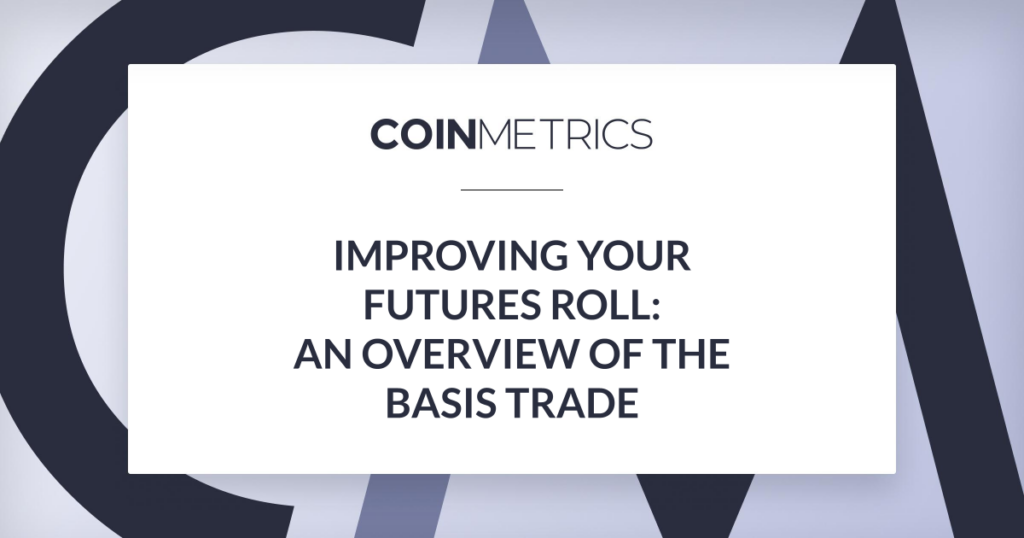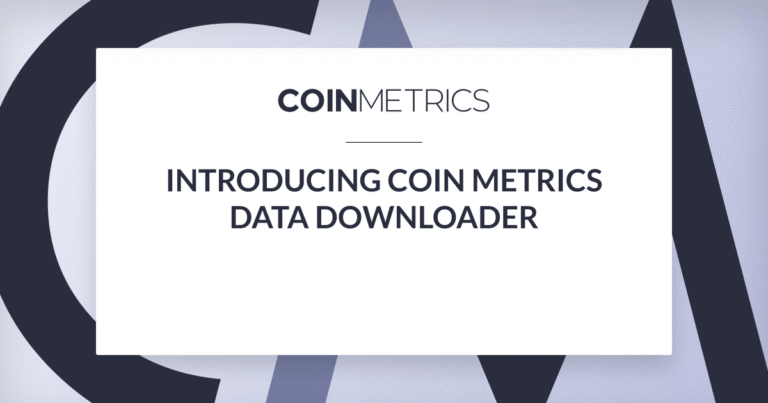Key Takeaways
- As futures volume balloons we take a look at the basis trade, which is when traders build a strategy around the difference between the spot price and futures contract price of a commodity.
- Unsurprisingly, volume shifts from the front contract to the next, flipping about 10 days out from front contract expiry.
- The additional difference in basis from the perpetual is less consistent, showing relative peaks around 50-60 days out from front contract expiration.
The ‘Basis’ Trade
One of the most popular trades for any commodity futures is the basis trade. This is when traders build a strategy around the difference between the spot price and futures contract price of a commodity. This exists in corn, soybean, oil and of course, Bitcoin.
There are a few different approaches you can take. If you expect that the difference between the spot and futures price will grow then you are long the basis, and inversely if you believe it will shrink then you are short the basis.
As a contract gets closer to expiration the uncertainty around it’s settlement price is reduced and theoretically should converge with spot. On the futures market in crypto this is generally measured as the difference between the perpetual or ‘perp’ contract and the futures contract. The perpetual contract is generally priced similar to spot with slight variations due to aspects such as the collateral allowed on the exchange and the funding rate which can vary in magnitude and direction based on the difference between the exchange’s mark price and underlying index price. For an overview of the Bitcoin perpetual swap market check out State of the Network Issue 62.
Why does this trade matter to the average crypto investor or market participant? As shown by the recent volatility and selloff over the Labor Day weekend, a lot of the volatility in the space can be exaggerated by changes in open interest of the futures contract. For example, if a trader has a long Bitcoin futures position with Bitcoin as collateral, a swift downturn in the market can force them out of their position (read: liquidate) and create additional selling pressure. The basis trade is one way to hedge that risk by taking an asset neutral approach.
The premium/discount that the front contract has traded to the perpetual
Source: Coin Metrics Market Data Feed
Improving the Roll
For the purposes of this research we are going to look at the historical data from the Bitcoin futures on BitMEX due to the longer timeline and historical majority of volume. Similar futures are also listed on Deribit, FTX, Huobi, and OKEx. There are many futures contracts that currently exist and Bitcoin is one of many. As always, this is not investment advice.
A significant consideration about putting on a futures position is dealing with the expiry or settlement. You may recall the jokes earlier this year about oil futures going negative during the shock to demand and lack of parties wanting to take delivery. While traders of Bitcoin don’t have to worry about barrels showing up at their homes since all Bitcoin futures are cash-settled, they may want to roll their basis trade onto the next contract to avoid closing it out altogether.
From here on, when we refer to the “front” contract we are referring to the contract with the soonest expiration date. When we refer to the “next” contract, we are referring to the contract with the expiration date following the front contract. For example, if the date was September 1, 2020 and there was a contract with a Sept. 25 expiration, Dec 25 expiration and March 25 expiration, these could be referred to as the “front”, “belly”, and “back” contracts. For our purposes, the “next” contract would be the December 25th tenor. Below is a look at the spread between the perpetual and front month contract with the data points colored by days to expiration.
As the expiration date approaches traders will want to open the position on the next up contract and close their position on the front contract. In this analysis we are using a scenario in which a trader is short the basis. Here we take a look at the best times to do that. The main consideration that we want to take into account is when the following expiration contract trades at a relatively larger spread than the front contract. We will also want to consider when volume shifts from the front to the following contract as an approximation for liquidity. Liquidity is the measure of how easy it is to move in and out of an order, measured by things such as order book depth and elasticity. Volume is not equivalent to liquidity, however it can generally be considered a downstream measurement.
Above is a look at the next contract spread less the front contract spread as the front contract moves toward expiration. There is a lot of noise towards the tail and expiry of the contract due to the historical volatility of Bitcoin. To reduce this we will look at the same data within two standard deviations.
With the data reduced to within two standard deviations, the mean and median would lead us to believe that the largest spread difference between the two contracts exists between 50 and 60 days out, or if you would like to wait longer, around 25 days out from expiration.
The ratio of the volume between the two contracts may also be an important aspect to the roll. Again, we are using these metrics as an approximation for liquidity. The importance being that if the position is larger than liquidity can support it will have negative consequences for the execution costs and potentially reduce the spread at time of opening.
Below we show a similar analysis with the ratio of the volume of the two contracts, again looking at the data within two standard deviations. The best time to roll a position between the two contracts appears to be around 10 days out, when volume on the contract you are exiting is approaching roughly equal to the one you are entering.
Below we have taken the median of the data within the two standard deviations and plotted the difference between the basis of the contract by the offset in the ratio of the trading volume. The dots are colored by days to expiration of the front month. This scatterplot shows a general “U” shape relationship between volume imbalance and additional spread in the later contract.
The data above shows that traders face a tradeoff between additional basis and volume equilibrium. They should take this into account and try to roll at the points closest to the top border within their comfort zone of liquidity.
Conclusion
There is no perfect answer on when to roll over your positions in a basis trade but this information should help to give you a better understanding of some of the dynamics at play. Another large factor is the funding rate and whether or not you are using the perpetual or actual spot asset as collateral. Bitcoin is just one of many futures contracts traded but we hope that this provides a good framework for better analyzing the overall market place.



